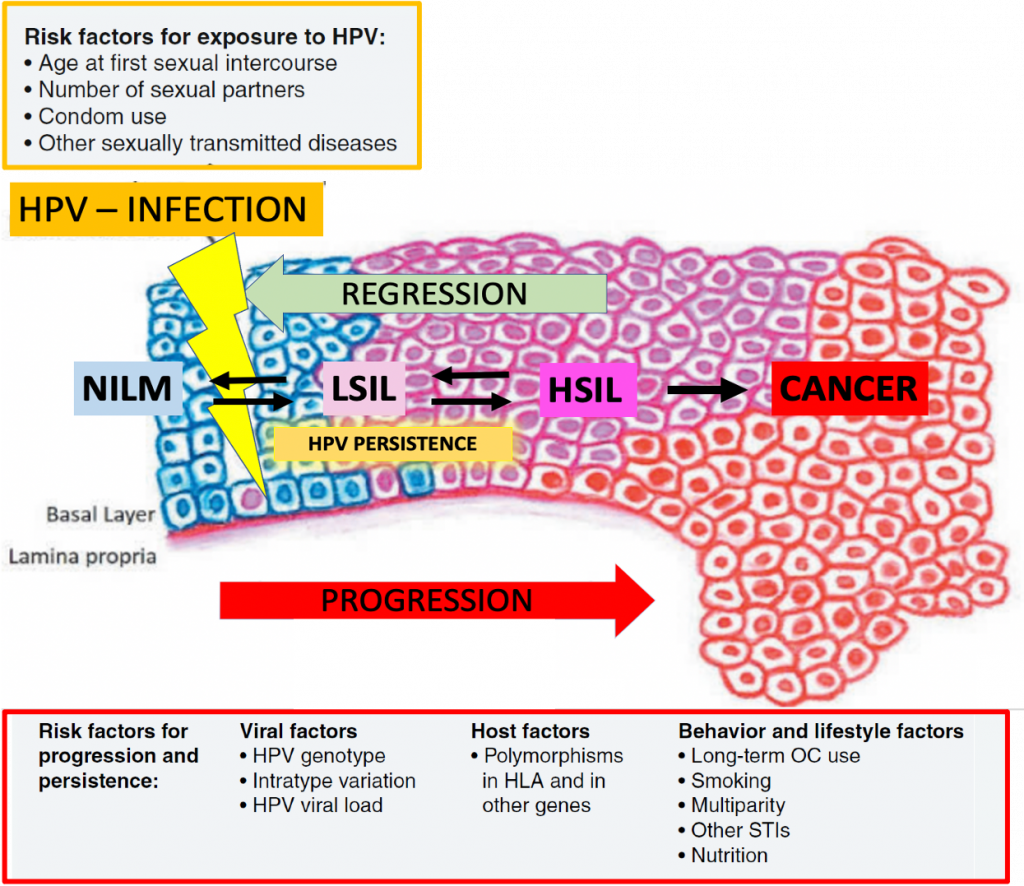BACKGROUND
Human Papillomavirus (HPV)s are small DNA viruses that infect epithelial cells and cause a variety of lesions ranging from common warts to intraepithelial neoplasia and cancer. Overall, HPV is currently responsible of approximately 10% of all cancers. It is now well established that nearly all cervical cancer cases are caused by HPV infection (Figure 1). Worldwide, cervical cancer is still a major public health problem and is the fourth most common cancer among women. In recent years, the role of HPV in the head and neck squamous cell carcinomas (HNSCC) has been well described, as well as vulvar, vaginal, penile and anal cancers. There are still enormous gaps in our knowledge concerning the fundamental role of HPV infection, its biology, and the clinical and public health applications of the preventive value of HPV vaccines and HPV tests.

GOALS
Our groups main goal is to provide in-depth understanding on the different variables and molecular epidemiology that are involved in the natural history of HPV-infection and disease progression. The group has a wide range of studies evaluating the natural role of genital and oral HPV infections starting from early life to later in adulthood as also various cohort studies from the colposcopy clinic.
Alongside evaluating the natural history of genital and oral HPV-infection, our focus is also on finding better cervical cancer screening and prevention tools for clinicians. These tools could be used in screening as well provide risk determinants that clinicians could use in the follow-up of women who have been diagnosed with cervical precancerous lesions. Ultimately, our primary target with our research is to improve and provide better current treatment, screening as vaccination guidelines of HPV related diseases in Finland as globally.
